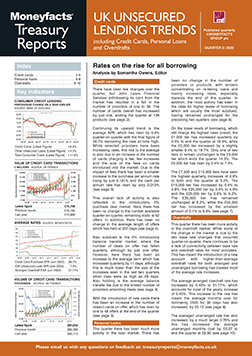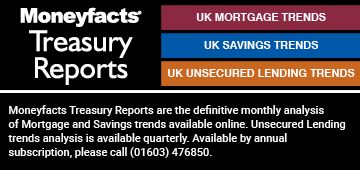Rachel Springall, Finance Expert at Moneyfacts, said:
“In the midst of a cost of living crisis there has been a rise in the cost of borrowing for new applicants on unsecured loans across several tiers, with some average rates hitting their highest levels in over six years. The average rate on the £7,500 loan tier now stands at 5.6%, up by 1.2% year-on-year, its highest point in over six years (January 2016 - 5.7%). Several providers increased rates and the lowest rate for new customers stands at 3.1% compared to 2.8% in June 2022. Lenders would typically keep this tier competitive as it is widely used as a representative APR, but we could see further rises to come if the potential risk for borrowers to default is elevated and lenders perhaps being more subdued with pricing competitively.
“Consumers who need to borrow over the short-term will find interest rates on credit cards rose during Q3 2022 and that introductory interest-free terms fell on both purchase and balance transfer cards. Over the past quarter, the market witnessed a new high purchase APR card enter the arena from American Express, charging 439.9% APR, which includes a fee of £575 per annum, and this, coupled with some interest rate rises from other providers, pushed the average APR to a new high of 29.6%. There have also been some interest purchase rate rises over Q3 2022, including those from American Express, Barclaycard, HSBC, Sainsbury’s Bank and Tesco Bank, and these, coupled with other card launches, resulted in a rise to the average per annum rate to 23.967% APR.
“Interest-free terms also fluctuated over Q3 2022, and between June and September both the 0% introductory terms for purchases and balance transfers fell slightly. There remains a healthy number of offers that will allow borrowers to move their debts interest-free or indeed make purchases, but this area of the market saw more subdued activity last month. In the months leading up to the festive season and the start of 2023, more competition could arise. One area that has worsened for borrowers is balance transfer fees, where the average stands at 1.99%, up from 1.95% in June. Borrowers looking to consolidate their debts would be wise to carefully compare these upfront fees and the length of any 0% offer before they commit.
“Managing debts and spreading the cost of any large purchases in the months to come is crucial. As the cost of living rises it is vital consumers keep up with their repayments and switch deals if they are being charged interest if they can. It is wise consumers check their credit score before they make any applications for a loan or card and seek advice if they are struggling with their debts.”
Rachel Springall, Finance Expert at Moneyfacts, said:
“In the midst of a cost of living crisis there has been a rise in the cost of borrowing for new applicants on unsecured loans across several tiers, with some average rates hitting their highest levels in over six years. The average rate on the £7,500 loan tier now stands at 5.6%, up by 1.2% year-on-year, its highest point in over six years (January 2016 - 5.7%). Several providers increased rates and the lowest rate for new customers stands at 3.1% compared to 2.8% in June 2022. Lenders would typically keep this tier competitive as it is widely used as a representative APR, but we could see further rises to come if the potential risk for borrowers to default is elevated and lenders perhaps being more subdued with pricing competitively.
“Consumers who need to borrow over the short-term will find interest rates on credit cards rose during Q3 2022 and that introductory interest-free terms fell on both purchase and balance transfer cards. Over the past quarter, the market witnessed a new high purchase APR card enter the arena from American Express, charging 439.9% APR, which includes a fee of £575 per annum, and this, coupled with some interest rate rises from other providers, pushed the average APR to a new high of 29.6%. There have also been some interest purchase rate rises over Q3 2022, including those from American Express, Barclaycard, HSBC, Sainsbury’s Bank and Tesco Bank, and these, coupled with other card launches, resulted in a rise to the average per annum rate to 23.967% APR.
“Interest-free terms also fluctuated over Q3 2022, and between June and September both the 0% introductory terms for purchases and balance transfers fell slightly. There remains a healthy number of offers that will allow borrowers to move their debts interest-free or indeed make purchases, but this area of the market saw more subdued activity last month. In the months leading up to the festive season and the start of 2023, more competition could arise. One area that has worsened for borrowers is balance transfer fees, where the average stands at 1.99%, up from 1.95% in June. Borrowers looking to consolidate their debts would be wise to carefully compare these upfront fees and the length of any 0% offer before they commit.
“Managing debts and spreading the cost of any large purchases in the months to come is crucial. As the cost of living rises it is vital consumers keep up with their repayments and switch deals if they are being charged interest if they can. It is wise consumers check their credit score before they make any applications for a loan or card and seek advice if they are struggling with their debts.”











